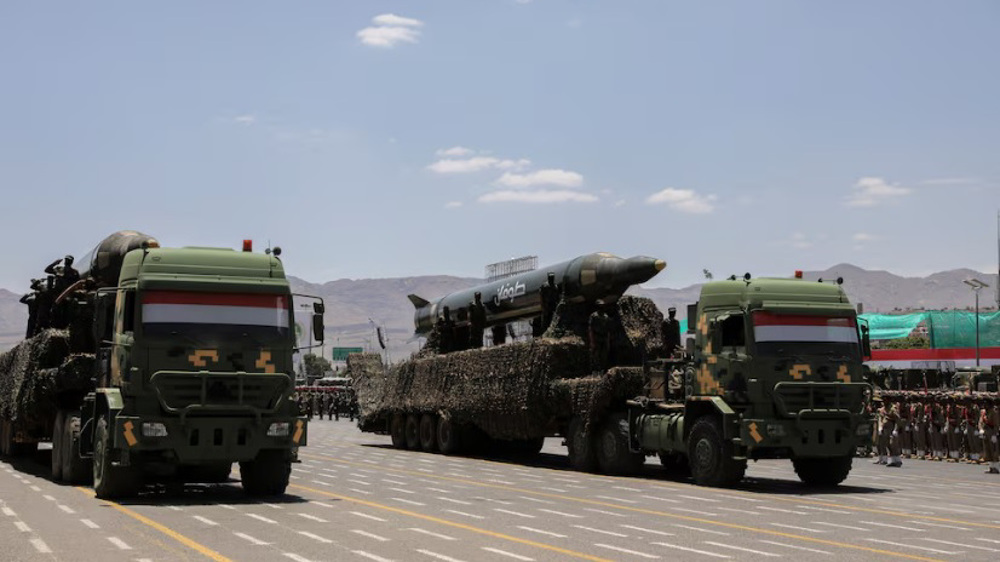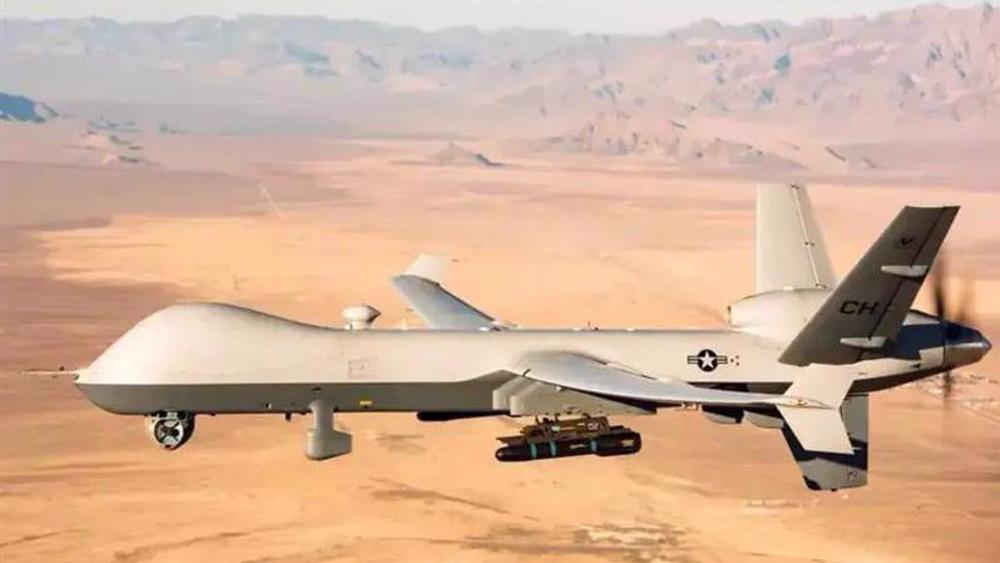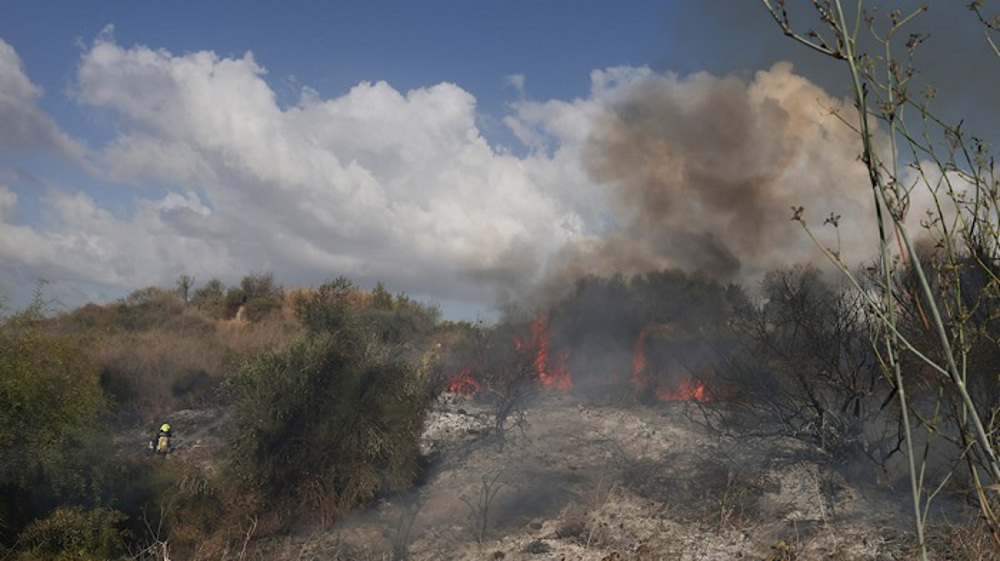Explainer: How did Yemeni military strike heart of Tel Aviv, evading hi-tech radars?
By Ivan Kesic
In another stunning military operation, the Yemeni military yet again exposed the inefficacy of much-hyped hi-tech Israeli radar systems by striking the heart of Tel Aviv early on Sunday.
The operation was in solidarity with the Palestinians in the besieged Gaza Strip amid the Israeli-American genocidal war that has so far claimed the lives of more than 41,200 Palestinians.
The first-of-its-kind military operation underlines a significant advancement in Yemen's military capabilities and exposes critical vulnerabilities in Israel's much-hyped air defense systems.
The hypersonic missile was aimed at central Tel Aviv, causing widespread damage, panic, and paralysis among a quarter of the illegal settler population in the occupied city and elsewhere.
Online footage showed fire, plumes of smoke, blocked roads, and panic-stricken settlers running for cover. Some reports said a number of settlers had to be transported to hospitals for treatment.
Israeli emergency medical services confirmed that nine people were injured in various locations across Tel Aviv as they ran helter-skelter following the activation of air raid sirens.
Yemen says hit south of Tel Aviv with new hypersonic ballistic missilehttps://t.co/e21z6ARw0x
— Press TV 🔻 (@PressTV) September 15, 2024
What was the target of the Yemeni operation?
At exactly 06:32 local time, the Israeli early-warning radar system detected a threat from about 800 square kilometers in the central part of the entity, between Tel Aviv and Al-Quds.
Sirens blared simultaneously in 74 settlements, not including numerous suburban and satellite towns, forcing over two million settlers in the area to take shelter.
The target area spanned roughly 32 km, stretched from Petah Tikva in the north to Kfar Uria in the south, and from Bat Yam in the west to Modiin in the east.
This region is centered between Ben Gurion Airport and the city of Lod.
The missile's wide impact zone suggests it either maneuvered mid-flight or carried a MIRV (Multiple Independently Targetable Reentry Vehicle) warhead, capable of striking several targets simultaneously.
This theory is supported by Israeli media reports, which confirm that different locations, including the Ben Shemen Forest, the surroundings of Modiin, and eastern Tel Aviv, were hit—despite being up to 25 km apart.
Yemeni military sources later stated that the intended target was a military site near Jaffa, south of Tel Aviv.
Yemeni missile attack exposes serious flaws in Israel's Iron Dome system: Reporthttps://t.co/wZ9bdjIPfr
— Press TV 🔻 (@PressTV) September 16, 2024
Which missile was used in the operation?
According to Brigadier General Yahya Saree, spokesperson for the Yemeni Armed Forces, the Yemeni military struck a target near Tel Aviv with a new hypersonic ballistic missile.
"It traveled a distance of 2,040 km in 11 and a half minutes, causing panic among Zionists, with over two million seeking shelter for the first time in the history of the Israeli enemy," Saree said in a statement hours after the military operation.
These details indicate hypersonic flight (above Mach 5), with an average speed of Mach 8.6, likely even faster during its descent.
Israeli military radio reported that the missile took "about 15 minutes" to cover the distance, at an average speed of Mach 6.6, further confirming Yemeni claims that it was a hypersonic weapon.
Yemeni sources did not specify the name or type of missile, leaving it unclear whether it was one of the hypersonic missiles unveiled in March and June.
In March, Yemen showcased a large hypersonic missile with an implied long range, while in June, they introduced a solid-fuel hypersonic missile named "Palestine," reportedly capable of reaching speeds of up to Mach 8.
Both missiles feature movable nozzles, allowing for mid-flight maneuverability—likely the reason Israeli radars were confused, causing widespread alarms.
The spokesman of the Yemeni army says the country carried out an attack on an Israeli military site in Tel Aviv by a new hypersonic ballistic missile.
— Press TV 🔻 (@PressTV) September 15, 2024
Follow Press TV on Telegram: https://t.co/B3zXG73Jym pic.twitter.com/FmxUpnwpGO
Why did Israeli air defenses fail again?
In a series of contradictory statements, Israeli military sources initially claimed that the Yemeni missile "disintegrated mid-air" over the occupied territories, and that the affected locations were hit by "shrapnel."
Furthermore, they reported that they had made "several attempts" to shoot down the Yemeni missile with the long-range Arrow air defense system and the short-range Iron Dome system, but that "the results of those attempts are still being investigated."
In other words, the interception efforts were unsuccessful, particularly for the Arrow system, which is designed to shoot down missiles far beyond the borders of occupied territories.
Even if the claim of mid-air disintegration is accurate, it implies that the missile entered Israeli airspace in a functional state, meaning the Arrow system failed in its interception attempt.
This failure is even more significant considering the billions of dollars invested in the US-Israeli joint development of the Arrow system over the past 25 years.
The system was previously touted as “99% effective”, but has failed to deliver.
Based on these pompous and obviously fabricated claims, Israel secured a $3.5 billion export contract with Germany last year, marking the largest military sale in its history.
The short-range Iron Dome system fared no better. According to Israeli officials, it "intercepted the shrapnel," but it is more likely that the system was responding to multiple active warheads, given the damage to infrastructure documented in photos.
Previously, the Iron Dome had been overwhelmed by salvos of low-cost missiles, and this latest event demonstrates that a single missile with a MIRV payload—or even its shrapnel—can cause similar problems.
According to Saree, the new hypersonic missile "successfully reached its target, and the enemy’s defense systems failed to intercept or confront it."
Japan scrambles fighters to monitor Russia-China 'show-of-force' patrol
US fighter jets fly over Gulf of Venezuela in new escalation
New leader of Israeli-backed militia in Gaza tied to Daesh: Report
VIDEO | Displaced Palestinians seek fragile alternatives to support their tents
VIDEO | Press TV's news headlines
VIDEO | Iran marks Intl. Anti-Corruption Day with summit on transparent governance
VIDEO | Ethiopia holds ceremony to mark Intl. Day of Solidarity with Palestinians
VIDEO | Pakistan voices outrage against Israel on Genocide Prevention Day















 This makes it easy to access the Press TV website
This makes it easy to access the Press TV website